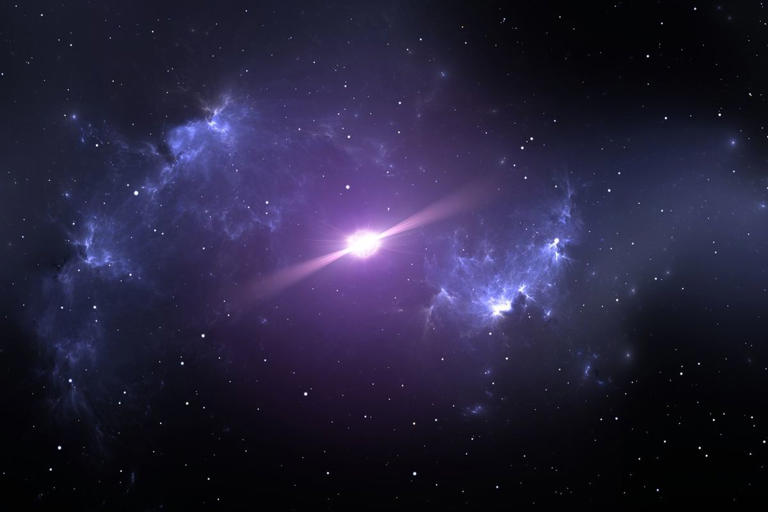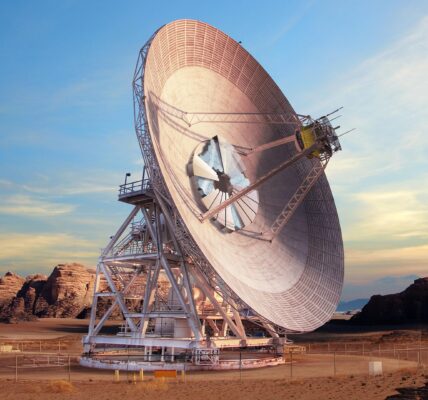Mysterious Signals from Pulsating Star discovered 15,000 light-years away are baffling astronomers with regular radio and X-ray bursts, sparking exciting theories in space science.

© GB News
Mysterious Signals from Pulsating Star Puzzle Astronomers
A star, now named ASKAP J1832, is giving off mysterious signals from a pulsating star that repeat every 44 minutes—and scientists have never seen anything quite like it before.
This star sits about 15,000 light-years away from Earth and seems to be sending out signals in two forms at the same time—radio waves and X-rays.
A Cosmic Mystery Like No Other
What makes the mysterious signals from pulsating star ASKAP J1832 so unique is the precise timing and dual emissions.This kind of regular, timed activity is rare in space and raises a lot of questions.
By using both space and ground-based observatories, scientists were able to confirm that these strange emissions were not just a fluke—they are real and repeating like clockwork.
What Is a Long-Period Radio Transient?
Scientists have categorized ASKAP J1832 as something called a “long-period radio transient.” This means that it is an object in space that sends out radio signals, but not constantly—only at certain times, with long gaps in between. The mysterious signals from pulsating star ASKAP J1832 show up every 44 minutes, which is much longer than typical pulsars that usually spin every few seconds or even milliseconds.
Nothing Like It in Our Galaxy
NASA scientists have said that this star’s behavior is “unlike anything astronomers have seen in the Milky Way.” The mysterious signals from pulsating star ASKAP J1832 are pushing the boundaries of what we know about stars and their life cycles.
Other known stars, like pulsars and magnetars, emit strong signals too, but they don’t do it like this. This star’s timing, signal type, and strength just don’t match any of the common types astronomers usually see.
Two Theories: Magnetar or White Dwarf?
Right now, scientists are exploring two main ideas to explain the mysterious signals from pulsating star ASKAP J1832:
1. It Could Be a Magnetar
A magnetar is a kind of neutron star with an extremely strong magnetic field. These stars are very dense and powerful and can send out both X-rays and radio waves. Some magnetars are known to emit signals occasionally, but not usually this regularly.
If ASKAP J1832 is a magnetar, it would be over 500,000 years old, which is considered quite ancient for this kind of star. That age could explain some of the unusual patterns—but not all of them.
2. It Might Be a White Dwarf in a Binary System
This could cause changes in its signal output if the two stars are interacting, possibly through gravity or magnetic activity.
However, no such white dwarf system has ever been seen to behave like this, which makes this theory exciting but also uncertain.
Ongoing Investigations Into the Mystery
Scientists are far from finished with studying this strange object. The mysterious signals from pulsating star ASKAP J1832 are being monitored closely with multiple telescopes. Researchers are collecting more data, checking for patterns, and trying to spot anything else that might give away its true identity.
They are also looking for gravitational waves, optical signals, or gamma rays from the same region in space. Any additional findings could help narrow down which theory fits best—or even introduce a brand new category of space object we’ve never seen before.
Why This Discovery Is So Important
The mysterious signals from pulsating star ASKAP J1832 offer a chance to learn more about the universe’s most extreme environments. Whether it turns out to be an unusual magnetar, a rare white dwarf, or something completely new, this discovery pushes our understanding of space to new limits.
Each new observation gives scientists more information to fine-tune their theories. It also shows how far we’ve come in space research—combining powerful tools on Earth and in orbit to study the most distant and unusual corners of the galaxy.
A New Chapter in Astronomy
In the end, the mysterious signals from pulsating star ASKAP J1832 might lead to the discovery of a new kind of celestial object. Or it could help refine existing ideas about stars that already challenge our knowledge. Either way, it’s a reminder that the universe still holds many secrets.
As researchers continue to dig into this cosmic mystery, one thing is certain: ASKAP J1832 has already earned a special place in space science history.
Related:
Lunar Crater Radio Telescope: 7 Mind-Blowing Discoveries Ahead



